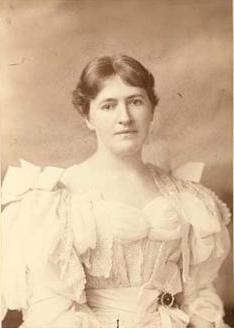Rose Cleveland facts for kids
Quick facts for kids
Rose Cleveland
|
|
|---|---|
 |
|
| Acting First Lady of the United States | |
| In role March 4, 1885 – June 2, 1886 |
|
| President | Grover Cleveland |
| Preceded by | Mary McElroy (acting) |
| Succeeded by | Frances Cleveland |
| Personal details | |
| Born |
Rose Elizabeth Cleveland
June 13, 1846 Buffalo, New York, U.S. |
| Died | November 22, 1918 (aged 72) Bagni di Lucca, Italy |
| Education | Houghton Seminary |
Rose Elizabeth "Libby" Cleveland (June 13, 1846 – November 22, 1918) was an important woman in American history. She served as the First Lady of the United States from 1885 to 1886. This happened during the first time her brother, Grover Cleveland, was president. He was not married when he became president, so Rose stepped in to help. She was the First Lady until her brother married Frances Folsom in June 1886.
Early Life and Education
Rose Elizabeth Cleveland was born in Fayetteville, New York, on June 13, 1846. Her family called her "Libby." She was the youngest of nine children born to Richard Falley Cleveland and Ann Neal Cleveland.
In September 1853, her family moved to Holland Patent, New York. Her father had just become a pastor there. Sadly, he died the next month when Rose was only seven years old.
Rose stayed in Holland Patent to take care of her mother, who was now a widow. Her older brother, Grover Cleveland, was 16. He decided to help support the family. He left school and went to New York City to work as a teacher. Rose went to school at Houghton Seminary in Clinton, New York. She later became a teacher there to support herself and help her mother.
Rose also taught at the Collegiate Institute in Lafayette, Indiana. She taught at a girls' school in Muncy, Pennsylvania, in the late 1860s. At Muncy Seminary, people knew Rose for her strong personality and how independent she was.
Her friends in Muncy gave her a nickname: "Johnny Cleveland." This was because she was often found reading a book under an old tree on a nearby farm. Rose also prepared history lectures. One lecture was about helping others and having faith. She gave this talk to students at Houghton Seminary and other schools.
In the 1880s, Rose went back to Holland Patent to care for her mother, who was not well. During this time, Rose taught Sunday School and worked on writing. She took care of her mother at their home until her mother passed away in 1882. After her mother's death, Rose was alone at the family home. She kept teaching Sunday School and giving lectures.
Time in the White House
When her older brother, Grover Cleveland, became the 22nd President of the United States in March 1885, Rose took on the duties of First Lady. She lived in the White House for fifteen months. She stood by her brother during his inauguration. She was his hostess while he was a bachelor in the White House.
When she first became First Lady, newspapers like The New York Times wrote about her. They reported on her appearance at her second White House reception. The newspaper said she wore a black satin dress with Spanish lace.
Rose Cleveland was very smart and loved learning. She was more interested in her studies than in hosting parties for important guests. She preferred to give lectures rather than entertain. However, she made sure to do her duties as First Lady to help her brother.
When President Cleveland married Frances Folsom, Rose left the White House. She then started a career in education. She became the principal of the Collegiate Institute of Lafayette, Indiana. She also became a writer and lecturer. She was even the editor of a magazine called Literary Life, which was based in Chicago.
Later Years and Legacy
Rose Cleveland later moved to Bagni di Lucca, Italy, in 1910. She lived there with her friend, Evangeline Simpson Whipple. They shared their home with an English artist named Nelly Erichsen.
Rose died at home on November 22, 1918. She passed away at 7:32 in the evening during the 1918 flu pandemic. She was buried in the English Cemetery in Bagni di Lucca. Evangeline was also buried next to Rose in the same cemetery 12 years later.
Rose Cleveland is remembered as an intelligent and independent woman. She supported her family and served her country as First Lady. She also had a career in education and writing.
See also
 In Spanish: Rose Cleveland para niños
In Spanish: Rose Cleveland para niños



